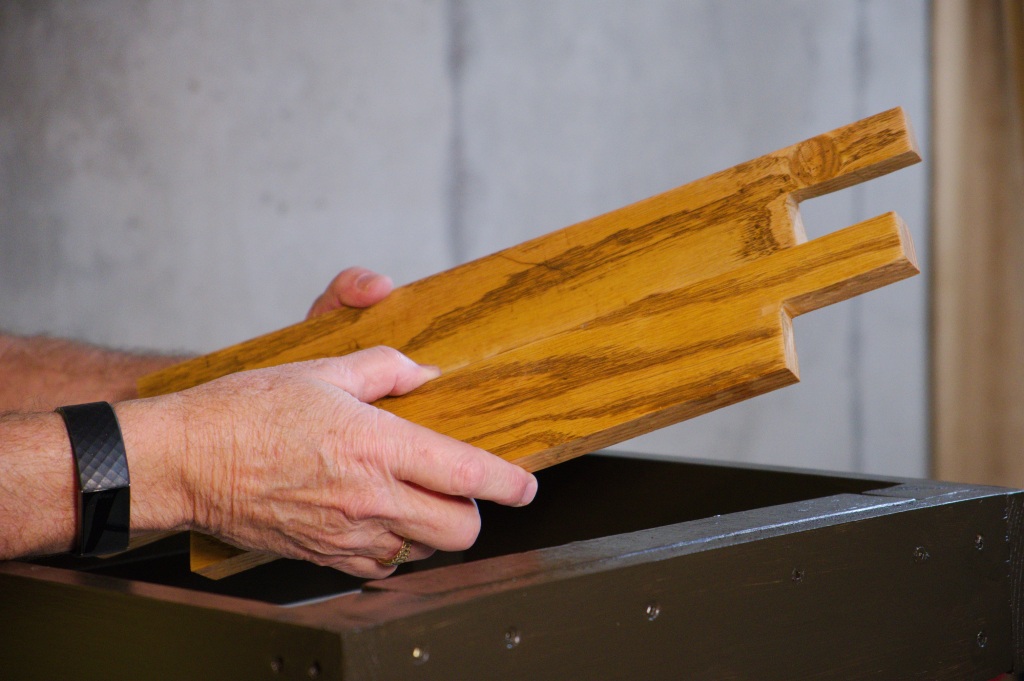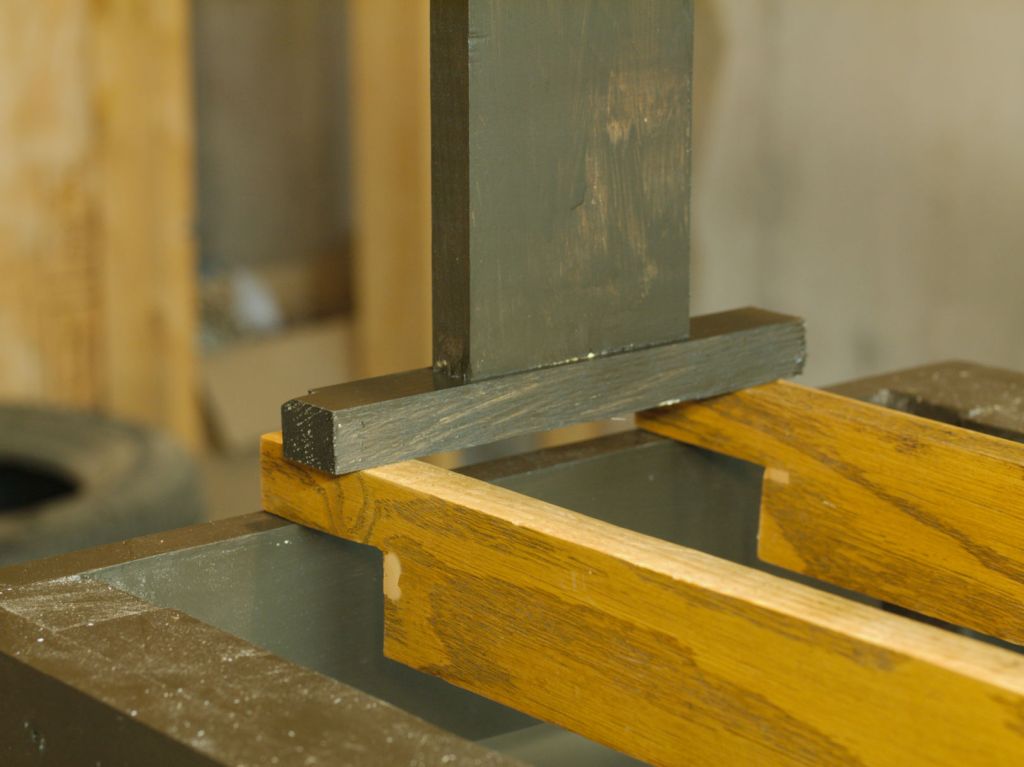A few weeks back I published an article on clock testing stands. While a single clock stand would be ideal for all movement testing purposes there are so many different types and styles of movements that one size does not fit all.
The one stand I was missing was for testing weight-driven ogee style clocks whether they be 30-hour or 8-day or select clocks that would require a pulley system for the weights.
Aside from an easy setup and quick mounting of a movement for testing it allows me to inspect the movement from all sides

Rather than construct a stand-alone ogee test stand I decided to make it a companion to my tall-case clock stand. Mounting atop the tall-case stand means that it is at the optimum height for making adjustments.
I also wanted something I could easily remove if I needed the long-case stand for testing and it is simple to set up.
Salvaging case parts from an old ogee simplifies the construction of the stand. It can be done without ogee case parts but it means devising a pulley system and making rails with slots for the movement seat board.
The ogee clock was purchased along with three others for $20 but the ogee clock case was in such poor condition it could not be restored.
A movement came with the case which I use for spare parts. The veneer has been harvested and used for other projects. The remaining wood pieces are stored and ready for use in future projects.
The tall-case stand is 48 inches high and will accommodate more than one movement although I generally work on one movement at a time. It is square-shaped and very stable though when used to test grandfather clock movements it is anchored to a wall to eliminate or reduce sympathetic vibration.
The tall-case stand is braced on all sides and the framing around the 4 legs adds additional stability and strength.

The rails, made of yellow oak, a hardwood, chosen for their strength.
The two pieces I am holding are the oak rails that are designed to fit into the top of the stand and are fully adjustable width-wise depending on the size of the movement.

The ogee stand is 10 inches high and has stabilizing rails under each side that rest on the oak rails. There is a cross brace in the front and back to give it strength and lateral stability. The top from an old ogee case is ideal because the pulleys are in the correct position for the weights.
The rails easily take the weight of a 30-hour movement which is about 7 1/2 lbs total. Will it take the 13 lb+ weight of an 8-day ogee? Yes. There is no need to screw or nail the ogee stand to the oak rails as the combined weight of the movement plus weights are enough to anchor the stand in place.

I painted the stand to match the tall-case stand.

I chose Espresso latex paint because it does a great job of hiding my carpentry errors.

Aside from an easy setup and quick mounting of a movement for testing purposes it allows me to inspect the movement from all sides.
It works as expected and now I can use the stand instead of the case for testing.
I know there is another ogee clock in my future!

Hi, I’ve been enjoying your emails on clocks. I’m a hobby horologist. I saw your earlier email about test stands and was wondering if you had a set of plans for a long case clock stand. Regards, Mike.
>
LikeLike
I built my tall case clock stand from scratch. I determined my needs and had the supplies on hand. The oak rails are fully adjustable. It is 48″ tall and 16X16 inches square. If you are anyway handy with a hammer you can easily build one too. Here is an article I wrote on that stand.
https://antiquevintageclock.com/2021/01/14/refinements-to-a-tall-case-clock-test-stand/
LikeLike
Mr. Joiner
I have enjoyed your posts, I guess from its beginning. I have had quite a few of the âNapoleon hatâ clocks over the years. My favorite is a Waterbury that I have had for about 15 years. It a very reliable working clock. It seems unusual in that it has frequently run for 12 to 14 days before I remember to wind it. I know this because I note the date and time that I do wind it.
Is this unusual? I have only lightly cleaned and oiled it a couple of times since I owned it.
C Hargis
Sent from Mail for Windows
LikeLike
Thanks for your comment. Many old American clocks had mainsprings that are more powerful than required. New clocks at the time would typically run well past their rated cycle but as the parts began to wear the movement would still be able to maintain their rated cycle of, say, 8 days. Among other things, the clock’s environment has a lot to do with wear. Your situation though unusual tells me that the clock is well cared for and oiled when necessary. At some point in the future it will need to be looked at but if it is running well now, there is no pressing need to service it. I’d hang on to it.
LikeLike